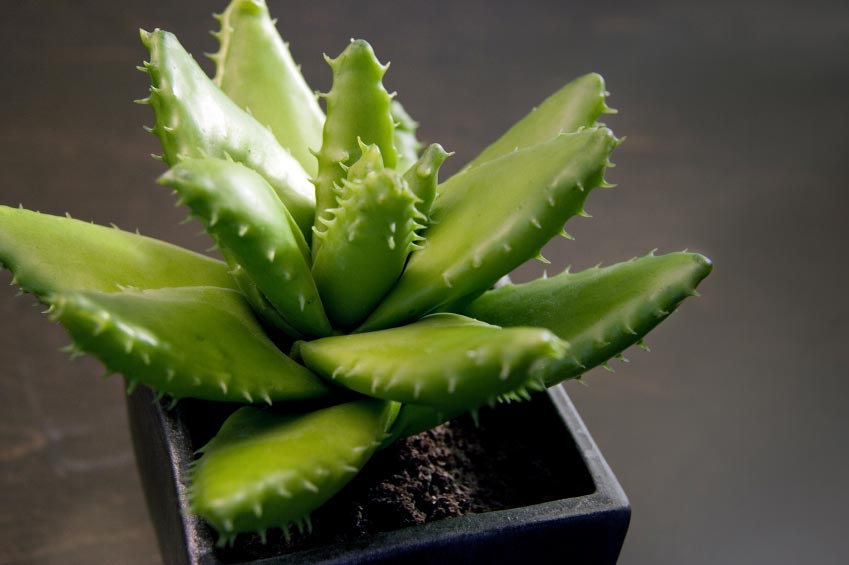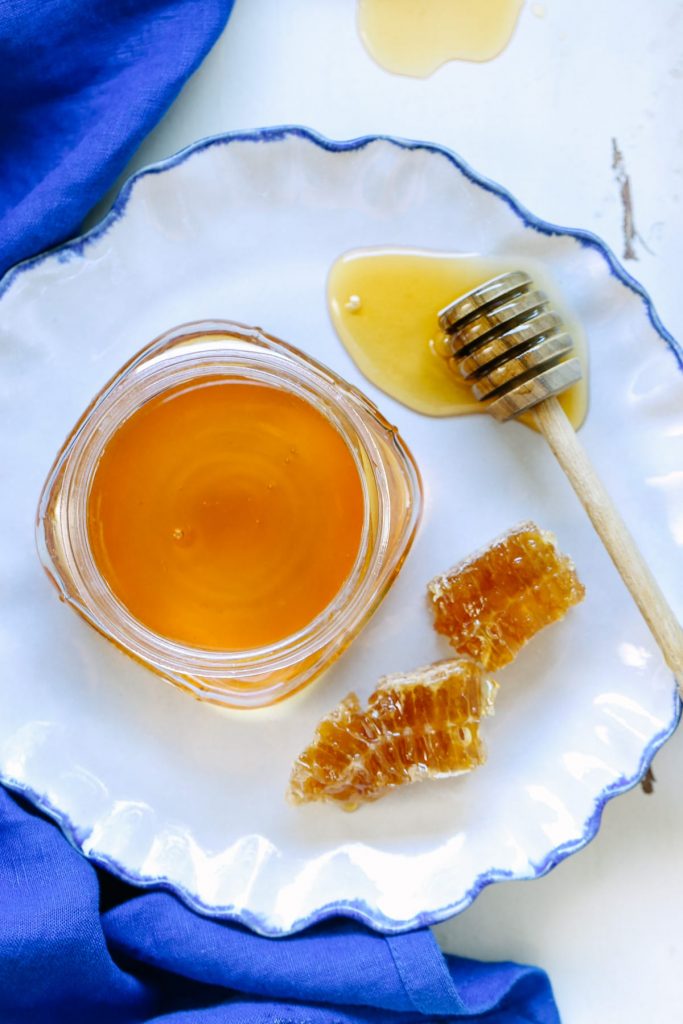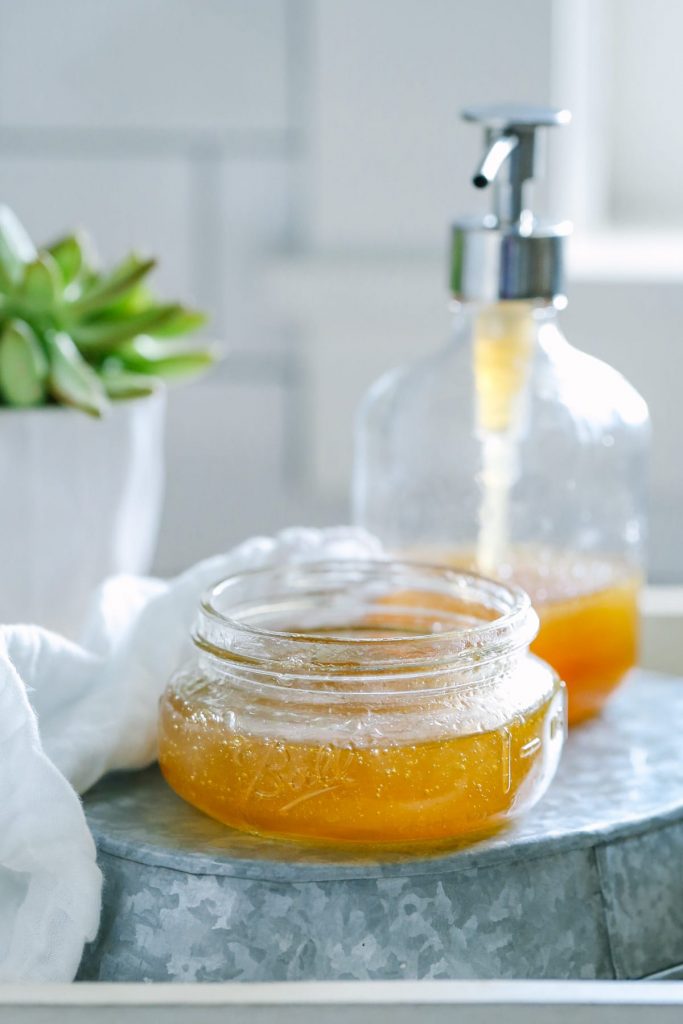
Although Aloe is about 99% water, the remaining 1% is extremely powerful and it is thought this is because the close to 100 ingredients work extremely well together (synergistically). Aloe vera contains many minerals vital to the growth process and healthy function of all the body's systems. The ingredients in Aloe can be grouped into the following categories: Vitamins, Minerals, Sugars, Enzymes, Lignins, Amino Acids, Anthraquinones, Saponins, Fatty Acids, Salicylic Acid.
Each of these categories could be discussed at length in their own right regarding individual molecules and ongoing studies into their remarkable effects. Combined together it's easy to see why Aloe Vera is such an effective healing plant.
Healing properties
Aloe is an excellent treatment for skin conditions such as burns and eczema. It is often reported that burns can be healed remarkably quickly and the pain reduced very quickly with topical application of Aloe Vera to the burn area. As well as applying topically, Aloe can also be taken internally so it is just as useful for internal epithelial tissue as it is for the skin. For example, mouth and stomach ulcers, nasal and sinuses, bowels, lungs and genital tracts. Aloe works on membranes and surfaces.
Is there Vitamin B12 in Aloe Vera?
It is often reported Aloe Vera is one of the only known natural vegetarian sources of Vitamin B12, however it appears there are only trace amounts of B12 at best in Aloe Vera. What does seem to be the case is that taking Aloe vera at the same time as a Vitamin B12 supplement increases the absorption and bio-availability of the B12 to the body. The B vitamins range, along with Vitamin C, are all water soluble, whereas the rest of the vitamins are fat soluble. Aloe vera seems quite special in that it appears to also enhance the absorption of Vitamin E (fat soluble) as well as Vitamin B12, which suggests it can help absorp the full range of fat and water soluble vitamins. It would therefore be a great addition to your daily regime as it may help adults, children, and even pets receive more value from their foods and supplements.
Aloe Vera Helps Immune System
Aloe also seems to be excellent at regulating the immune system (an immunomodulator). This means it can both stimulate the immune response for those with weakened immune systems either from exisiting conditions or post-illness fatigue. It can also calm the immune response, such as for hayfever where less immune reaction is beneficial. Various research studies are underway to explore the potential of the components to boost immunity and combat the HIV virus, and to treat certain types of cancer (particularly leukemia). It may even have a role to play in managing diabetes. Numerous studies worldwide indicate that it is a general tonic for the immune system, helping it to fight illness of all kinds. Over 200 worldwide scientific research papers have been published on the effects. The three main categories of research include anti-inflammatory, anti- bacterial, and anti-viral actions of the plant. The juice is said to soothe digestive tract irritations such as colitis, ulcers and irritable bowel syndrome. It's ability to encourage the release of pepsin (a gastric juice enzyme necessary for digestion) when the stomach is full is a possible reason for its ulcer-healing effects (Journal of the American Osteopathic Society, 1963, vol.62). In one study, oral use for six months helped mitigate asthma symptoms in almost half of the participants. Eleven of twenty-seven patients studied who drank Aloe reported feeling better at the end of the study. Researchers think that results might be due to stimulation of the immune system, as well as naturally occurring anti-inflammatory agents in the plant.
In 1994, the US Food and Drug Administration approved Aloe vera for the treatment of HIV. On-going studies worldwide show that taken in highly concentrated doses can stimulate the production of white blood cells that may help fight viruses and also tumours.
Aloe vera nutrients list
Vitamin C which helps maintain tone of blood vessels and promotes good circulation and is essential to the health of the adrenal gland which supports our body in times of stress.
Amino acids which are chains of atoms constructing protein in our body.
Enzymes, which are the life-principle in every live, organic atom and molecule of natural raw food, rejuvenate aged tissues and promote healthy skin.
Germanium which is a mineral that some health authorities claim therapeutic benefits for: immunodeficiency, pain, cardiac disorders, circulatory disturbances and eye problems.
Aloe vera body cleansing juice
The juice is said to be one of the finest body cleansers, cleaning morbid matter from the stomach, liver, kidneys, spleen, bladder, and is considered the finest, known colon cleanser. Studies have shown that it is healing and soothing in the relief of indigestion, stomach distress and ulcers. People claim relief from arthritis, bladder and kidney infections; leg cramps, constipation, hemorrhoids, insomnia, and for vaginitis, it is said to be an excellent vaginal douche. An excellent internal tonic for energy and well being Aloe juice may add greatly to the strength of the food fed, digestive tract, skin, and overall good health and happiness.
Aids digestion
It is also used to ease heartburn, ulcers, diverticular disorders, and other types of digestive upset. It is used as an anti-inflammatory and may be taken internally as a remedy for certain digestive complaints. European folk medicine calls for using the juice to relieve heartburn and ulcers. Preliminary research has shown promising results. Clinical trials in Japan indicate that certain compounds in the herb reduce the secretion of stomach juices and the formation of lesions.
Fights disease
In 1997, University of San Antonio researcher Jeremiah Herlihy, Ph.D., conducted a study to observe any negative effects of drinking it daily. Rather than exhibiting negative effects, however, test animals receiving daily Aloe showed a remarkable reduction in leukemia, heart disease, and kidney disease. Dr. Herlihy concluded, "We found no indication of harm done to the rats even at high levels." In fact, the Aloe-drinking animals actually lived 25 percent longer than those in the control group (IASC Conference, Texas, 1997).
Animal studies and anecdotal reports claim that drinking the juice or taking it as a tablet or capsule can reduce swelling and inflammation in arthritic joints. Drinking the juice may also help those asthmatic patients who are not dependent on cortico-steroids.
There is no single ingredient that makes it very potent and healthful. Researcher Robert Davis, Ph.D., an endocrinologist-biologist, explains that fifteen different compound groups of nutrients work together to make the plant effective. This means that Aloe vera's effects cannot be synthesized easily in a laboratory. On the upside, this makes the plant useful across a wide spectrum of circumstances. And because the various elements that make it effective are nutrients rather than drugs, the juice may complement medical treatments. In fact some cancer patients state that Aloe vera seems to reduce nausea, increase energy, and may help to minimize low blood counts caused by chemotherapy or radiation.



 Aloecorp is the industry leader in producing quality Aloe vera raw material including gels, whole leaf, liquid concentrates and powders. Aloecorp is devoted to producing the highest quality Aloe products through the use of quality control parameters including various devices for analyzing chemical and physical characteristics, and in vitro assays for monitoring biological activity. Aloecorp is the only supplier with a full range of biological, chemical and medicinal R&D capabilities. Superior products deliver high quality with added benefits to the consumer ― and consumers expect a more effective and consistent product they can depend on time after time. More recently, Aloecorp began developing an Aloe vera farm on Hainan Island in Southern China. (See the "
Aloecorp is the industry leader in producing quality Aloe vera raw material including gels, whole leaf, liquid concentrates and powders. Aloecorp is devoted to producing the highest quality Aloe products through the use of quality control parameters including various devices for analyzing chemical and physical characteristics, and in vitro assays for monitoring biological activity. Aloecorp is the only supplier with a full range of biological, chemical and medicinal R&D capabilities. Superior products deliver high quality with added benefits to the consumer ― and consumers expect a more effective and consistent product they can depend on time after time. More recently, Aloecorp began developing an Aloe vera farm on Hainan Island in Southern China. (See the " Aloe vera leaves are normally sensitive to subfreezing temperatures after several hours. Since occasional arctic cold fronts move down through Southern Texas, weather can be a ruinous factor to an Aloe vera processing schedule. With that in mind, Aloecorp thought it prudent to grow a large, additional supply of Aloe vera leaves further South in Mexico. Our Mexican farm is located in the southern tip of the State of Tamaulipas, Gonzalez, about fifty miles northwest of Tampico in the northern tip of State Veracruz, Panuco by the beautiful Panuco riverside.
Aloe vera leaves are normally sensitive to subfreezing temperatures after several hours. Since occasional arctic cold fronts move down through Southern Texas, weather can be a ruinous factor to an Aloe vera processing schedule. With that in mind, Aloecorp thought it prudent to grow a large, additional supply of Aloe vera leaves further South in Mexico. Our Mexican farm is located in the southern tip of the State of Tamaulipas, Gonzalez, about fifty miles northwest of Tampico in the northern tip of State Veracruz, Panuco by the beautiful Panuco riverside. towards Tampico, the hills rest higher and slope downward toward a valley on the western horizon, where the mountain called El Bernal juts out of the flats like a giant tree trunk. The plantation itself is a glorious sight. Smooth, rolling hills are blanketed with countless rows of Aloe plants that seem to go on forever. Amid the light green fields are a few ponds lined with tall, dark trees. Like the surrounding land, the farm slightly slopes toward the valley to the west, giving the observer a perfect view of El Bernal. Near the center of the farm, beside the largest pond, stands the bright white, newly constructed Aloecorp Plantation building which houses the production and processing facility, warehouse and offices. The structure has a Mexican architectural flavor, with arches lining the front walk, wall-to-wall tile and a complete absence of wood.
towards Tampico, the hills rest higher and slope downward toward a valley on the western horizon, where the mountain called El Bernal juts out of the flats like a giant tree trunk. The plantation itself is a glorious sight. Smooth, rolling hills are blanketed with countless rows of Aloe plants that seem to go on forever. Amid the light green fields are a few ponds lined with tall, dark trees. Like the surrounding land, the farm slightly slopes toward the valley to the west, giving the observer a perfect view of El Bernal. Near the center of the farm, beside the largest pond, stands the bright white, newly constructed Aloecorp Plantation building which houses the production and processing facility, warehouse and offices. The structure has a Mexican architectural flavor, with arches lining the front walk, wall-to-wall tile and a complete absence of wood. meeting. During the meeting, the farm manager informs field employees of the projects to be carried out that day. A typical project might be weeding a certain section of the farm, or harvesting a certain amount of leaves. The one hundred-plus employees at the plantation work in the field, or in production or maintenance capacities. Once the farm manager has given his instructions, the production manager leads a small discussion. The topic might be something like facility cleanliness or productivity. At each meeting, employees are given the opportunity to voice their opinions and point out problems to the manager. Any problems that may exist are discussed openly at the meeting. By the meeting's end, employees know exactly what they are to do that day.
meeting. During the meeting, the farm manager informs field employees of the projects to be carried out that day. A typical project might be weeding a certain section of the farm, or harvesting a certain amount of leaves. The one hundred-plus employees at the plantation work in the field, or in production or maintenance capacities. Once the farm manager has given his instructions, the production manager leads a small discussion. The topic might be something like facility cleanliness or productivity. At each meeting, employees are given the opportunity to voice their opinions and point out problems to the manager. Any problems that may exist are discussed openly at the meeting. By the meeting's end, employees know exactly what they are to do that day. incoming harvested leaves into the primary washer located just outside the production room. The production room is filled with a stainless steel conveyor system that quickly moves harvested leaves from the primary wash tank outside through a small opening in the wall into the room. The conveyors propel leaves to the mechanical leaf washer, then to the cutting area, and finally through the gel expulsion machines. The production room is kept in an ultra-sanitary state, even when not in use. Employees are required to go through a process of sanitation every time they enter the room and the entire area is thoroughly cleaned after each production run. Once the gel is expelled from the leaves, it is pumped through a de-pulping machine. The pure Aloe gel is then moved through HTST, the best pasteurizing method to reduce microbial count in the fresh product and stored in an insulated tank, ready to be pumped into a concentration operation.
incoming harvested leaves into the primary washer located just outside the production room. The production room is filled with a stainless steel conveyor system that quickly moves harvested leaves from the primary wash tank outside through a small opening in the wall into the room. The conveyors propel leaves to the mechanical leaf washer, then to the cutting area, and finally through the gel expulsion machines. The production room is kept in an ultra-sanitary state, even when not in use. Employees are required to go through a process of sanitation every time they enter the room and the entire area is thoroughly cleaned after each production run. Once the gel is expelled from the leaves, it is pumped through a de-pulping machine. The pure Aloe gel is then moved through HTST, the best pasteurizing method to reduce microbial count in the fresh product and stored in an insulated tank, ready to be pumped into a concentration operation.
 Today’s DIY beauty product is super easy to make. So easy you’ll only need three ingredients, andzero fancy tools!
Today’s DIY beauty product is super easy to make. So easy you’ll only need three ingredients, andzero fancy tools!





